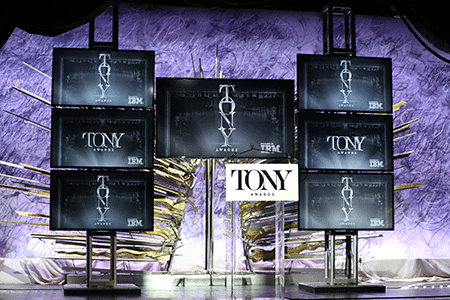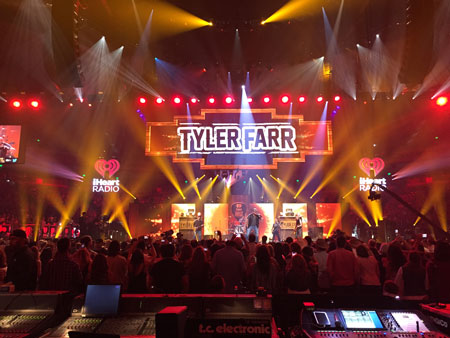Courtesy of Front Of House Online
Axient Digital microphone systems and PSM 1000 play key roles in 2018 Grammy telecast
NILES, IL., February 12, 2018—The 60th Annual Grammy Awards, broadcast live on CBS, brought its usual array of mash-ups, tributes, and stunning performances of the best in music to New York’s Madison Square Garden and a global television audience. Shure wireless microphones, in-ear monitor systems, and hardwired mics played a key role in ensuring flawless audio throughout the three-hour celebration of Music’s Biggest Night.
A seasoned crew of professionals led by Audio Coordinator Michael Abbott teamed up to meet the show’s substantial sound requirements, with Firehouse Productions supplying the audio, RF and communications gear, while Music Mix Mobile brought two full recording trucks for 5.1 surround music mixing. As always, the Grammy team encouraged all performers to use their preferred vocal microphones.
To meet the challenge of delivering enough channels for the ambitious, dual-stage production, RF Coordinator Vinny Siniscal used Shure Axient Digital as the default wireless microphones for artists on stage, as its spectral efficiency permits more channels in less available spectrum than any analog system. The other key need is for highly reliable in-ear monitoring. As has become common practice on all major award shows, 24 channels of Shure PSM 1000 delivered flawless sound to the performers on both stages.
The night’s big winner, Bruno Mars, used an Axient Digital handheld for his vocals. So did Luis Fonsi and Daddy Yankee in their performance of “Despacito.” The system was also central to several of the show’s signature events, including a Beta 58A version for the Chuck Berry tribute by Gary Clark Jr. and SM58 capsules for “Tears in Heaven,” featuring Maren Morris, Brothers Osborne and Eric Church.
“This was the first live to air show we’ve done with all digital mics, and this is a high-channel count show. I like the way Axient Digital performs; the RF performance is solid,” reports Siniscal. “I especially love the rechargeable battery technology. The long battery life and ability to monitor the battery status gives us confidence throughout the show.”
One of the night’s biggest highlights was Kesha’s impassioned performance of “Praying,” addressing the issue of sexual abuse in society and the music industry. Kesha used her usual Shure UHF-R handheld wireless, while backing vocalists Andra Day, Cyndi Lauper, Julia Michaels, and Camila Cabello used Axient Digital systems with classic SM58 mics.
Other performers on Axient Digital included Bono, Little Big Town, Childish Gambino, Logic, Shaggy, DJ Khaled, Broadway stars Patti Lupone and Ben Platt, Khalid, Dave Chappelle, Alessia Cara, and SZA.
The Grammy Awards boasts a deep, experienced crew of mix engineers, with Tom Holmes in the main production truck delivering alternating mixes from Eric Schilling and Jon Harris in the M3 trucks. For the live mix inside Madison Square Garden, Ron Reaves handled the music mixes, with Mikael Stewart in his accustomed role as program mixer. The two stages each hosted one monitor console, with those mixes performed by Tom Pesa and Simon Welch, who was pleased to see the PSM 1000 in place.
“The PSM 1000 RF front end is the best in the industry; you know when you are driving it hard you won’t have any issues,” notes Welch. “The Cue Mode feature is invaluable for run-and-gun shows like this.”
Shure’s dominance in wireless even extended outside Madison Square Garden. All wireless microphones used on the red carpet for pre-broadcast interviews were UHF-R with KSM9 mic capsules, and Axient was U2’s choice for vocals, bass and guitar wireless in their pre-taped performance at the Statue of Liberty.
“We knew going into the Grammys this year was going to be challenging, especially trying to coordinate wireless frequencies in one of the biggest cities in the world,” says Shure Artist Relations Manager Cory Lorentz. “Shure wireless, especially Axient Digital, played a much larger role in this year’s show, and we were ecstatic to see the huge channel count on hand to make such a large production run smoothly.”




